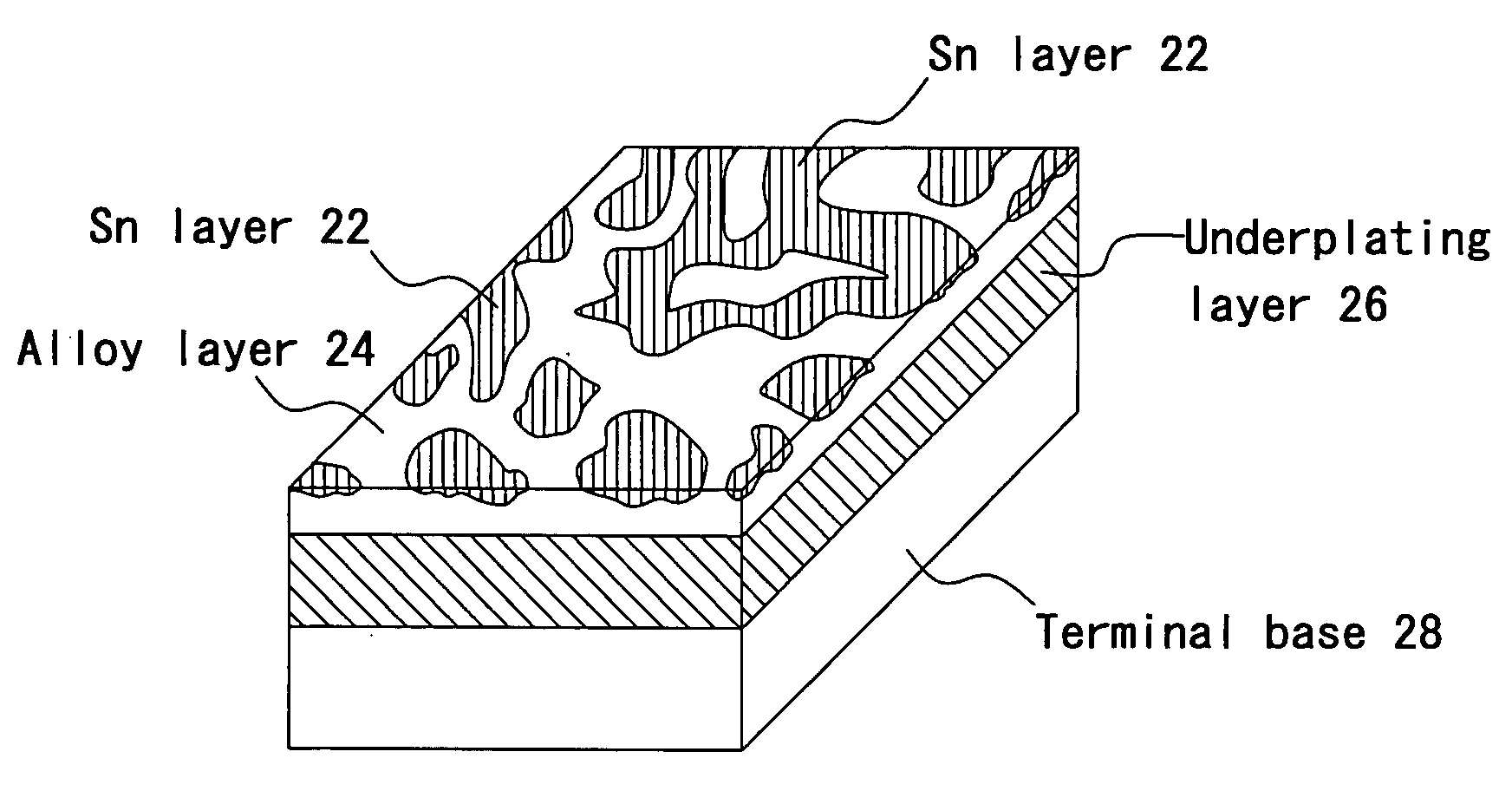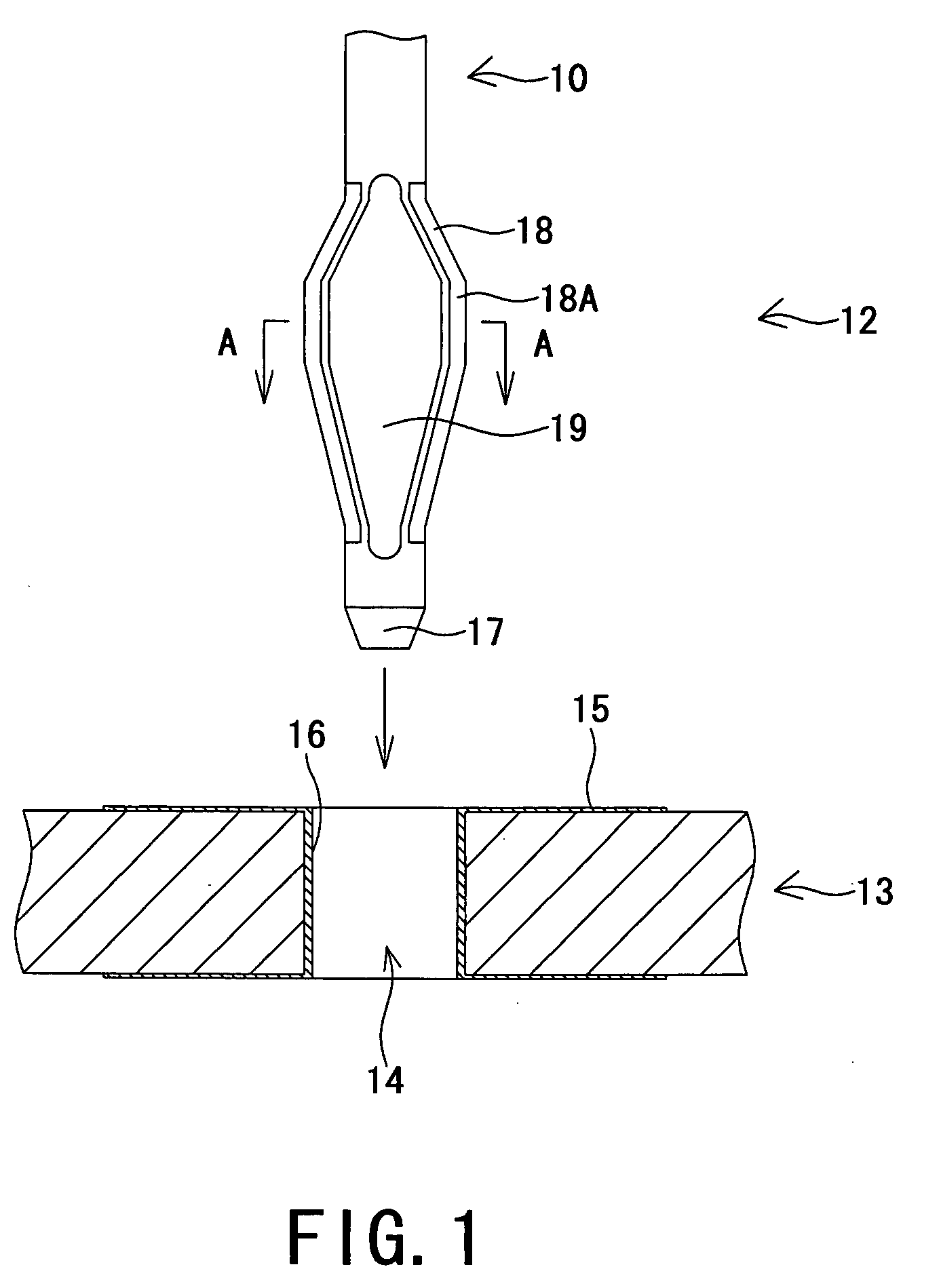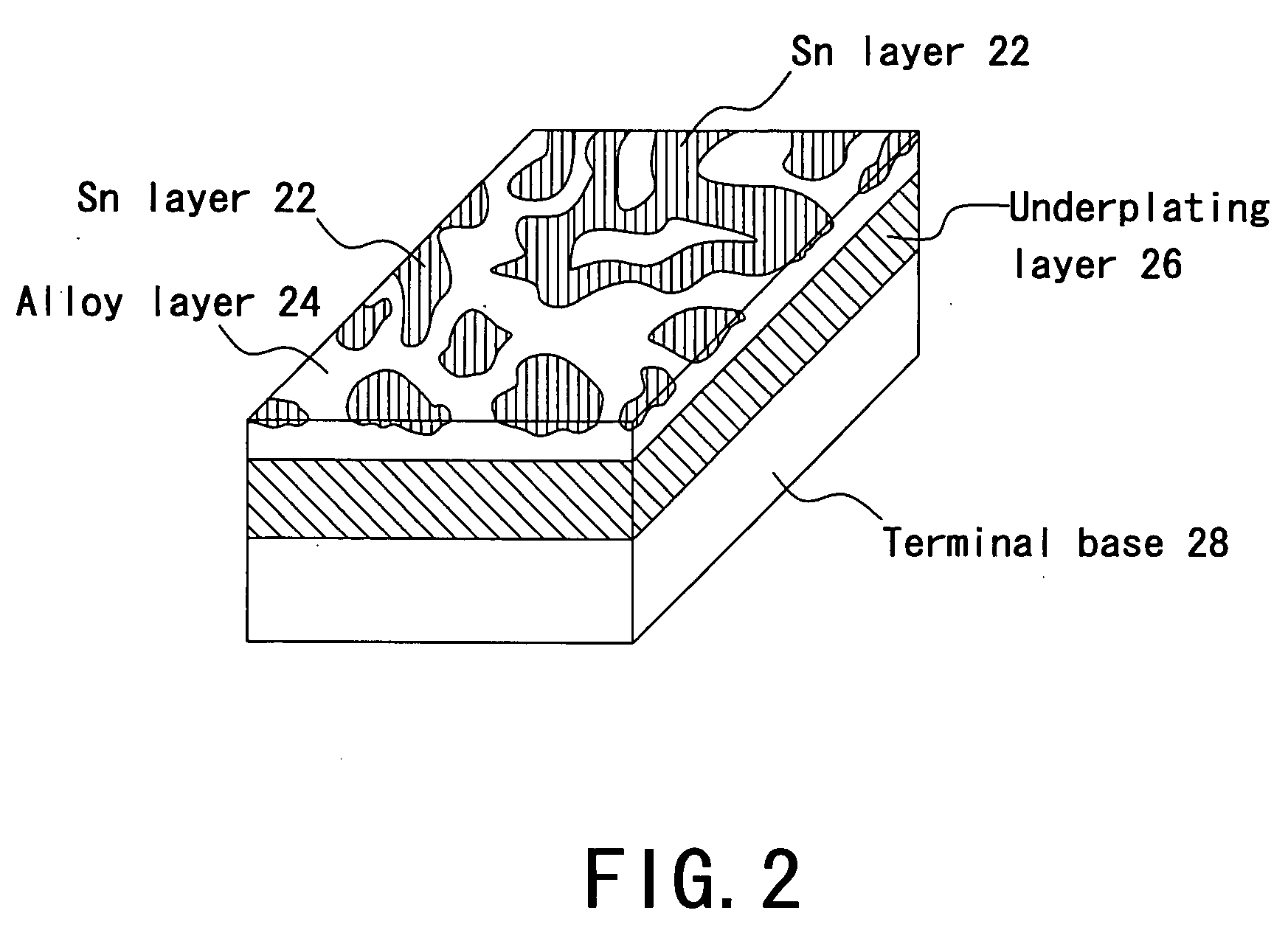Press-Fit Terminal, a Method for Manufacturing the Same, and a Structure of Connection Between a Press-Fit Terminal and a Circuit Board
- Summary
- Abstract
- Description
- Claims
- Application Information
AI Technical Summary
Benefits of technology
Problems solved by technology
Method used
Image
Examples
example 1
[0080]Ni plating as an underplating layer was provided to a connecting part of a press-fit terminal having a copper based alloy as a base material, and Sn plating at a thickness of 0.4 μm was provided thereto. Then, heating-cooling treatment (of about 30 seconds) was made so that an ultimate maximum temperature became 232-odd ° C. under the temperature conditions shown in FIG. 10, and an Sn—Ni alloy layer was formed on the Ni plating layer.
[0081]Then, a plating surface of the press-fit terminal after the heating-cooling treatment (the reflow process) was observed by an SEM. An SEM image thereof is shown in FIG. 4.
[0082]It was observed from the SEM image in FIG. 4 that white portions 42 and a black portion 44 are mixed. The percentages of Sn and Ni in the while portions 42 and the black portion 44 were measured by AES (Auger Electron Spectroscopy). Results thereof are shown in FIGS. 5A and 5B.
[0083]FIG. 5A shows measurement results on the white portions 42 shown in FIG. 4, and FIG. 5...
examples 2 and 3
[0093]Similar to Example 1, underplating of an Ni metal was provided to connecting parts of press-fit terminals having a copper based alloy as a base material, and Sn plating at a thickness of 0.2 μm and Sn plating at a thickness of 0.7 μm were provided thereto, respectively. Then, heating-cooling treatment (of about 30 seconds) was made so that an ultimate maximum temperature became 232-odd ° C., and Sn—Ni alloy layers were formed on the Ni plating layers. Plating surfaces of the terminals were observed by an SEM, and it was observed, similar to Example 1, that unalloyed Sn was mixed in the outside layers of the Sn—Ni alloy layers.
example 4
[0100]Ni plating and Cu plating as an underplating layer were provided in this order to a connecting part of a press-fit terminal having a copper based alloy as a base material, and Sn plating at a thickness of 0.4 μm was provided thereto. Then, heating-cooling treatment (of about 30 seconds) was made so that an ultimate maximum temperature became 232-odd ° C., and an Sn—Cu alloy layer was formed on the Cu plating layer. The press-fit terminal was press-fitted into and connected to the Cu-plated through hole of the circuit board, and their connection interface was observed by an SIM (Scanning Ion Microscope). In order to test the connection properties in hot environment, the press-fit terminal and the circuit board under connection were let stand for 1000 hours under temperature conditions of 125° C., and a time course change of contact resistance was measured.
PUM
| Property | Measurement | Unit |
|---|---|---|
| Temperature | aaaaa | aaaaa |
| Length | aaaaa | aaaaa |
| Depth | aaaaa | aaaaa |
Abstract
Description
Claims
Application Information
 Login to View More
Login to View More - R&D
- Intellectual Property
- Life Sciences
- Materials
- Tech Scout
- Unparalleled Data Quality
- Higher Quality Content
- 60% Fewer Hallucinations
Browse by: Latest US Patents, China's latest patents, Technical Efficacy Thesaurus, Application Domain, Technology Topic, Popular Technical Reports.
© 2025 PatSnap. All rights reserved.Legal|Privacy policy|Modern Slavery Act Transparency Statement|Sitemap|About US| Contact US: help@patsnap.com



